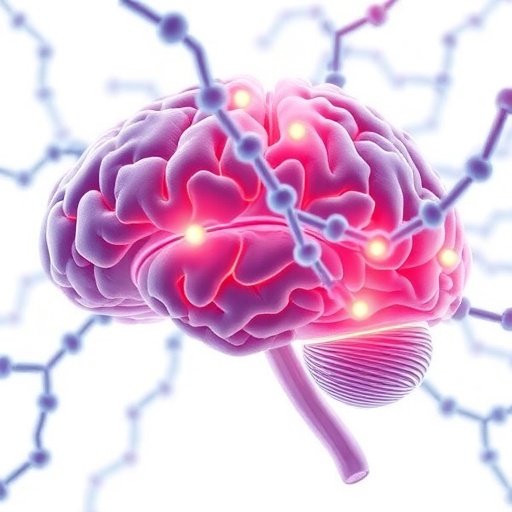Recent groundbreaking research has shed new light on the intricate interplay between apolipoprotein E (ApoE) and brain energy metabolism, revealing critical insights with far-reaching implications for Alzheimer’s disease (AD). In a comprehensive study published in Translational Psychiatry, Budny, Ruminot, Wybitul, and colleagues meticulously delineate the multifaceted role of ApoE not merely as a lipid transport protein but as a central modulator of metabolic processes essential for neuronal survival and function. As Alzheimer’s continues to exact a devastating toll worldwide, deciphering the metabolic underpinnings of the disease holds promise for transformative therapeutic approaches.
At the core of this research lies the recognition of ApoE’s isoforms, particularly ApoE4, as pivotal determinants of AD risk. While ApoE’s classical role involves shuttling cholesterol and other lipids between cells, the study expands this view, demonstrating how differential ApoE isoforms shape cerebral energy homeostasis in nuanced ways. The brain, a disproportionately energy-demanding organ, relies on tightly regulated metabolic networks to sustain synaptic activity, glial function, and neuroplasticity. Disruptions precipitated by pathogenic ApoE variants may thus derail these energy fluxes, accelerating neurodegeneration.
The authors explore how ApoE interfaces with glucose and lipid metabolism within the brain’s cellular milieu. Glucose has traditionally been regarded as the brain’s principal fuel; yet, growing evidence emphasizes the significance of alternative substrates like ketone bodies and fatty acids, especially under pathological conditions. ApoE influences the uptake and utilization of these fuels by modulating receptor-mediated transport and intracellular processing pathways. Such modulation by ApoE isoforms alters mitochondrial dynamics and biogenesis, ultimately impacting ATP production efficiency.
Significantly, the study illuminates ApoE’s impact on astrocytes and microglia, two glial cell types essential for maintaining cerebral metabolic balance. Astrocytes support neurons by supplying lactate derived from glycolysis, while microglia regulate inflammatory states that can compromise metabolic resilience. ApoE isoforms differentially affect these glial functions, with ApoE4 associated with impaired lactate shuttling and exacerbated inflammatory responses. These perturbations contribute to energy deficits within affected brain regions, creating a vulnerable landscape for synaptic loss.
Further delving into the molecular level, the research addresses how ApoE influences key signaling pathways related to metabolism, including AMP-activated protein kinase (AMPK) and peroxisome proliferator-activated receptor gamma coactivator 1-alpha (PGC-1α). Dysregulation of these pathways by ApoE4 impairs mitochondrial biogenesis and antioxidant capacity, fostering oxidative stress and bioenergetic failure. These events converge to create an environment ripe for amyloid-beta accumulation and Tau pathology, hallmark features of Alzheimer’s disease.
The authors also examine how ApoE variants affect lipid droplet formation and cholesterol transport within the brain. Lipid droplets serve as critical energy reservoirs and protect neurons from lipotoxicity. ApoE4’s diminished efficacy in lipid regulation leads to altered lipid homeostasis, exacerbating cellular stress and inflammation. Understanding these lipid metabolic derangements offers novel angles for therapeutic intervention targeting metabolic rewiring.
Intriguingly, the study highlights emerging evidence for ApoE’s influence on cerebral insulin signaling. Insulin resistance in the brain is increasingly recognized as a contributing factor to neurodegeneration. ApoE4 carriers display impaired insulin receptor function and downstream signaling cascades, which compounds glucose hypometabolism and energy insufficiency. This mechanistic insight bridges metabolic disturbances with established pathways implicated in AD pathogenesis.
The research leverages advanced imaging and metabolic profiling techniques to map the spatial and temporal dynamics of ApoE-related metabolic changes in vivo. PET imaging reveals that ApoE4 individuals exhibit reduced cerebral glucose uptake in regions typically vulnerable to AD, such as the hippocampus and posterior cingulate cortex. These hypometabolic zones precede structural atrophy, underscoring the primacy of metabolic dysfunction early in disease progression.
To model these complexities, the study utilizes genetically engineered mice expressing human ApoE isoforms, alongside induced pluripotent stem cell-derived neural cultures. These systems recapitulate key metabolic derangements observed in humans, enabling dissection of cell-type-specific effects and high-throughput screening of metabolic modifiers. This translational approach accelerates the identification of candidate therapies aimed at restoring energy balance in the AD brain.
Importantly, the findings generate hope for novel therapeutic strategies centered on metabolic modulation. Agents that enhance mitochondrial function, promote ketone utilization, or mitigate oxidative damage hold promise, particularly if tailored to ApoE genotype. Nutritional interventions, such as ketogenic diets or medium-chain triglyceride supplementation, emerge as potential complementary approaches to pharmacology in slowing cognitive decline.
The authors also call attention to the need for personalized medicine paradigms that integrate metabolic phenotyping with genetic risk profiling. ApoE genotype-informed clinical trials could stratify participants more effectively, ensuring targeted treatments reach those most likely to benefit. This precision strategy represents a paradigm shift in Alzheimer’s research and clinical practice.
In a broader context, this research underscores the brain’s profound dependence on finely tuned energy metabolism and the catastrophic consequences when this equilibrium fails. It reiterates the concept that Alzheimer’s disease is not solely a proteinopathy but fundamentally intertwined with systemic and cerebral metabolic dysregulation. This holistic view invites multidisciplinary collaborations spanning neurology, metabolism, and molecular biology.
As research efforts intensify, the elucidation of ApoE’s central role in brain energetics may inspire breakthrough interventions that transform the trajectory of Alzheimer’s disease. From basic mechanistic insights to clinical applications, this study marks a pivotal milestone, illuminating a path toward mitigating one of humanity’s most formidable neurological challenges.
In summary, the work by Budny et al. offers a thorough elucidation of the multifarious roles of apolipoprotein E in brain energy metabolism and the pathophysiology of Alzheimer’s disease. Their findings expand the conceptual framework of AD, highlighting metabolic dysfunction as a critical axis of disease progression linked to ApoE genotype. This integrative perspective opens compelling avenues for diagnostics and metabolism-centered therapeutic development, potentially reshaping the future landscape of neurodegenerative disease management.
Subject of Research: The role of apolipoprotein E in brain energy metabolism and its implications for Alzheimer’s disease.
Article Title: Fueling the brain – the role of apolipoprotein E in brain energy metabolism and its implications for Alzheimer’s disease.
Article References:
Budny, V., Ruminot, I., Wybitul, M. et al. Fueling the brain – the role of apolipoprotein E in brain energy metabolism and its implications for Alzheimer’s disease. Transl Psychiatry 15, 316 (2025). https://doi.org/10.1038/s41398-025-03550-w
Image Credits: AI Generated




